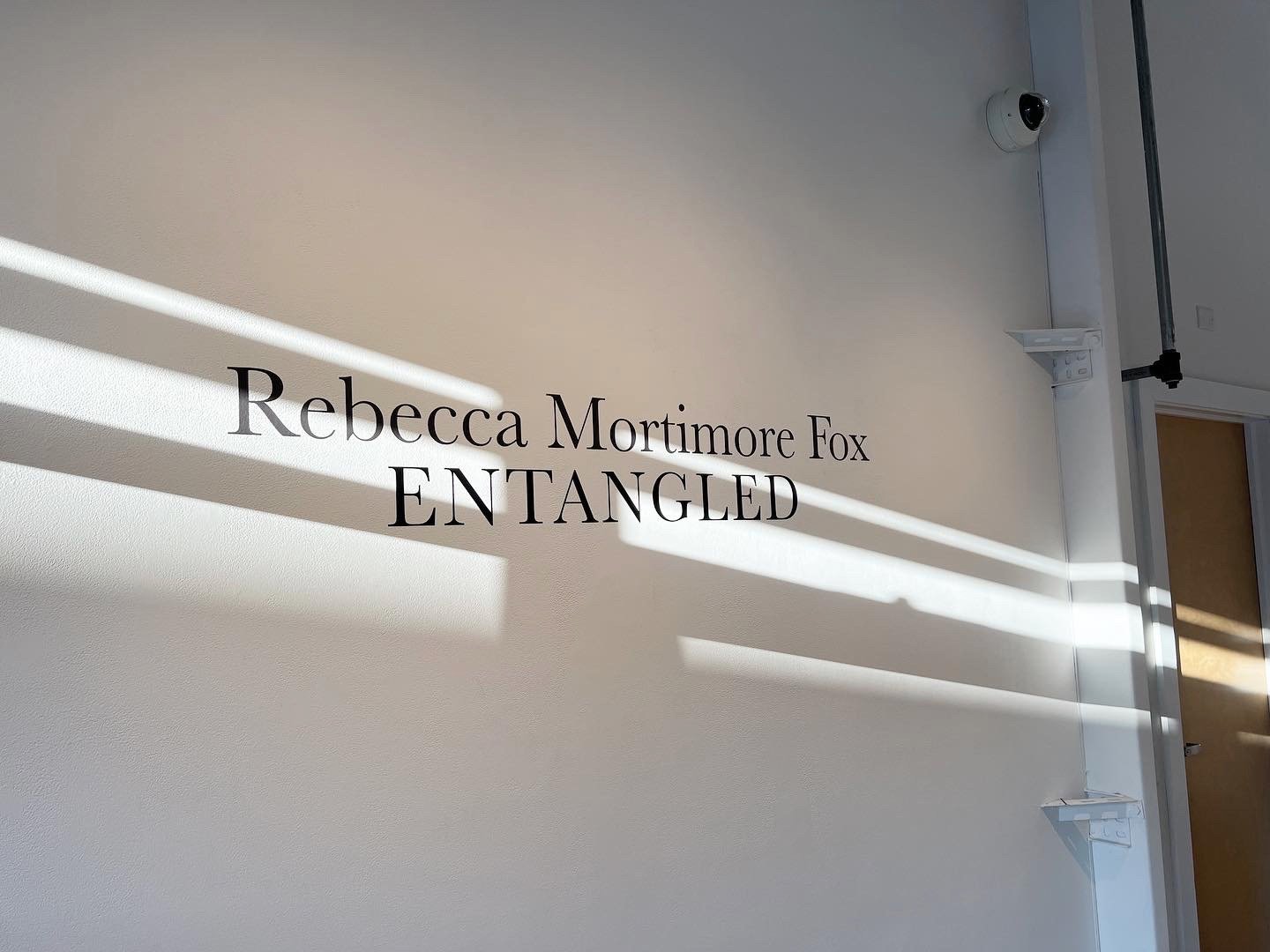
From March 9 to April 1, “Entangled” was on display as a solo exhibition at the Goodyear Gallery in Carlisle, Pennsylvania. All of the work in the show is ceramic stoneware. Read below for the show statement and more information about individual pieces.
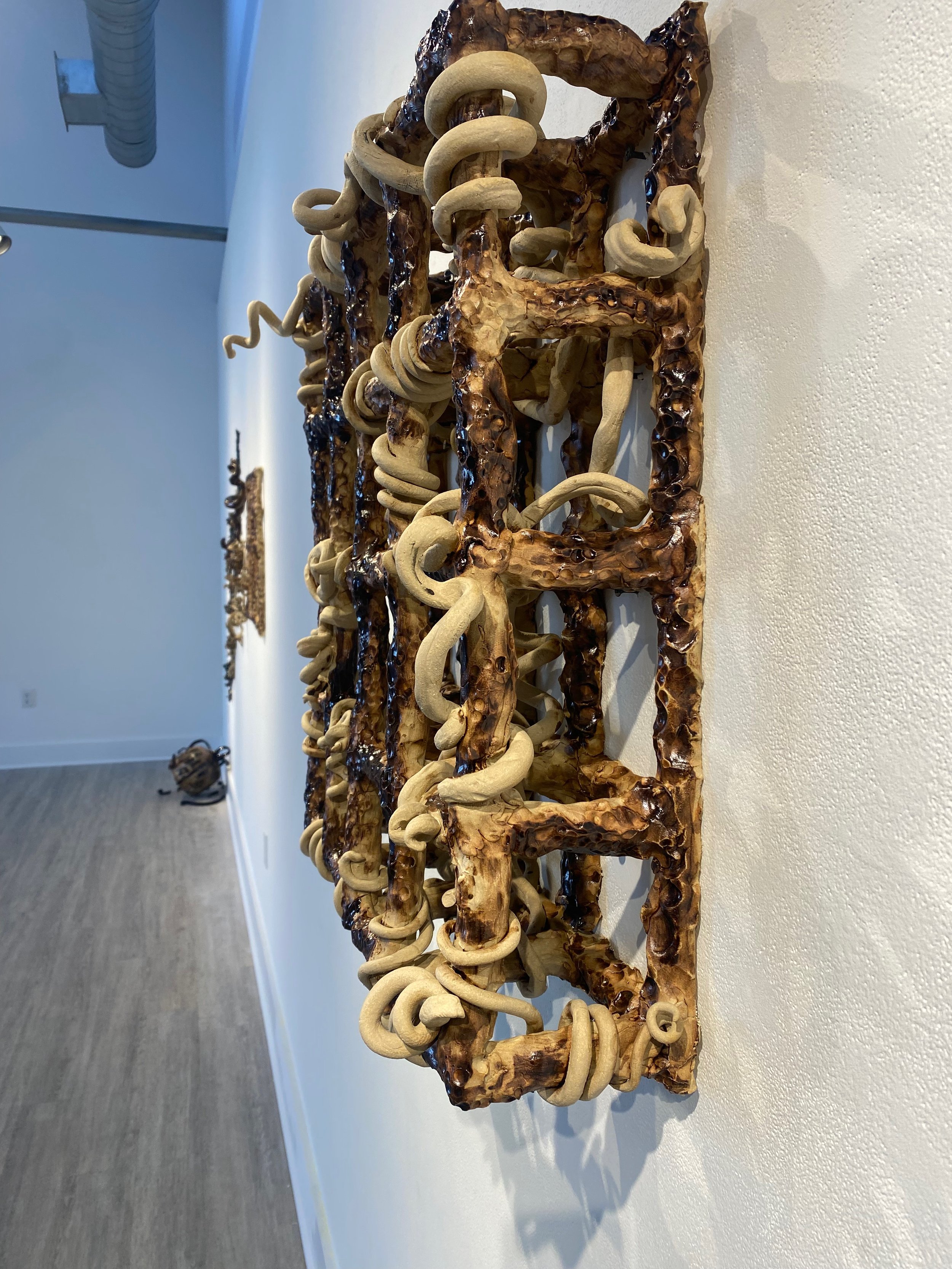
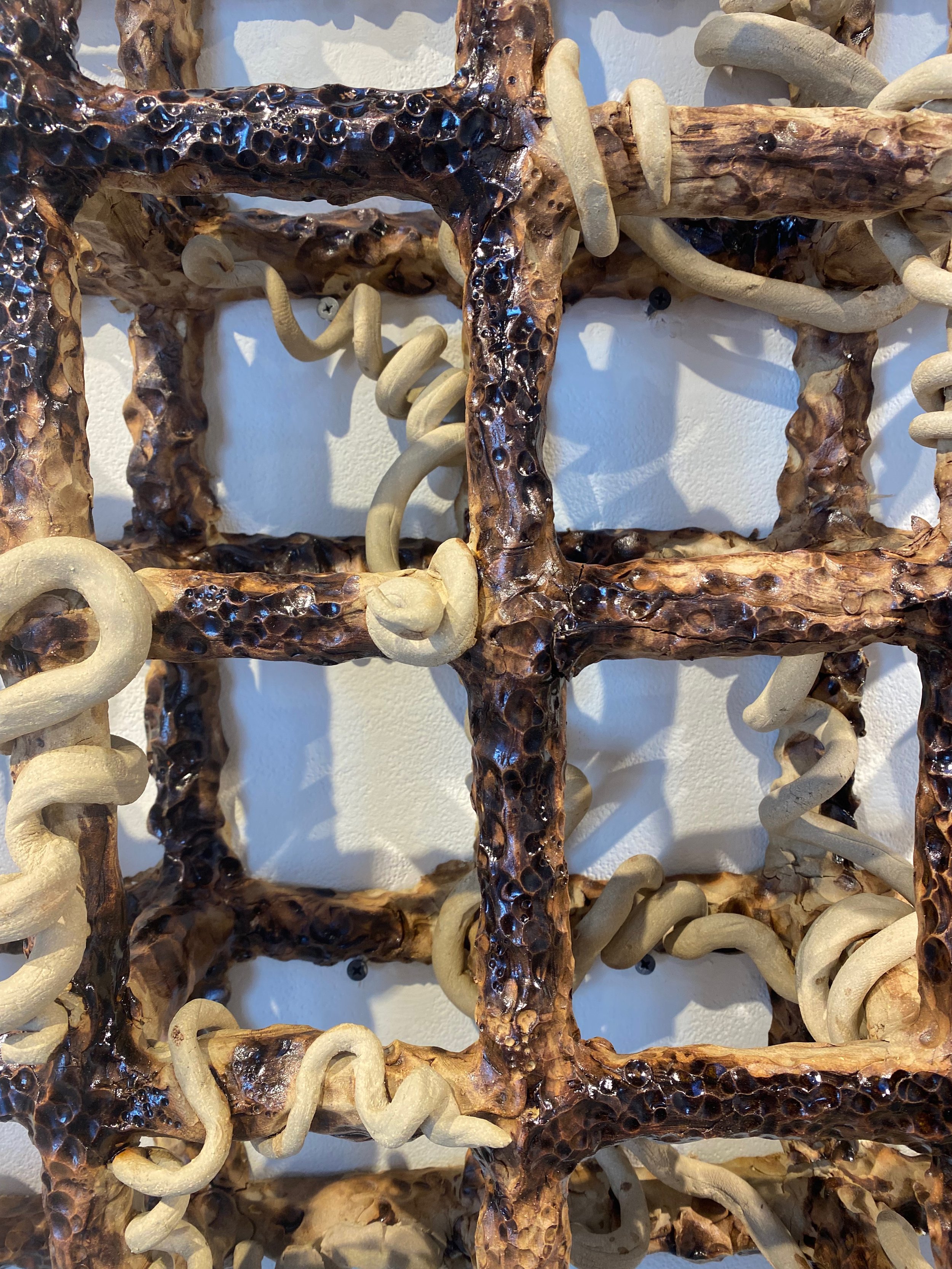
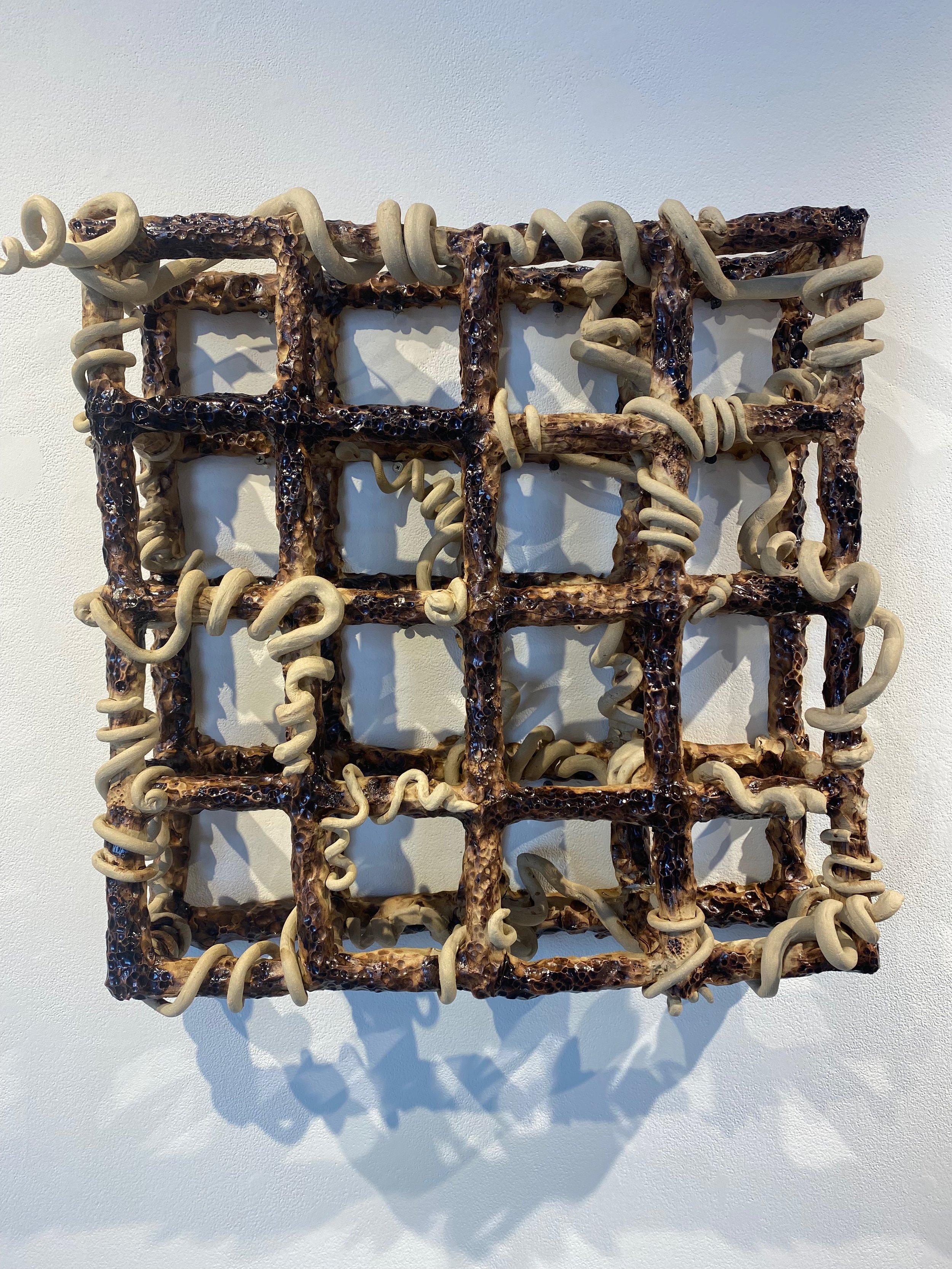

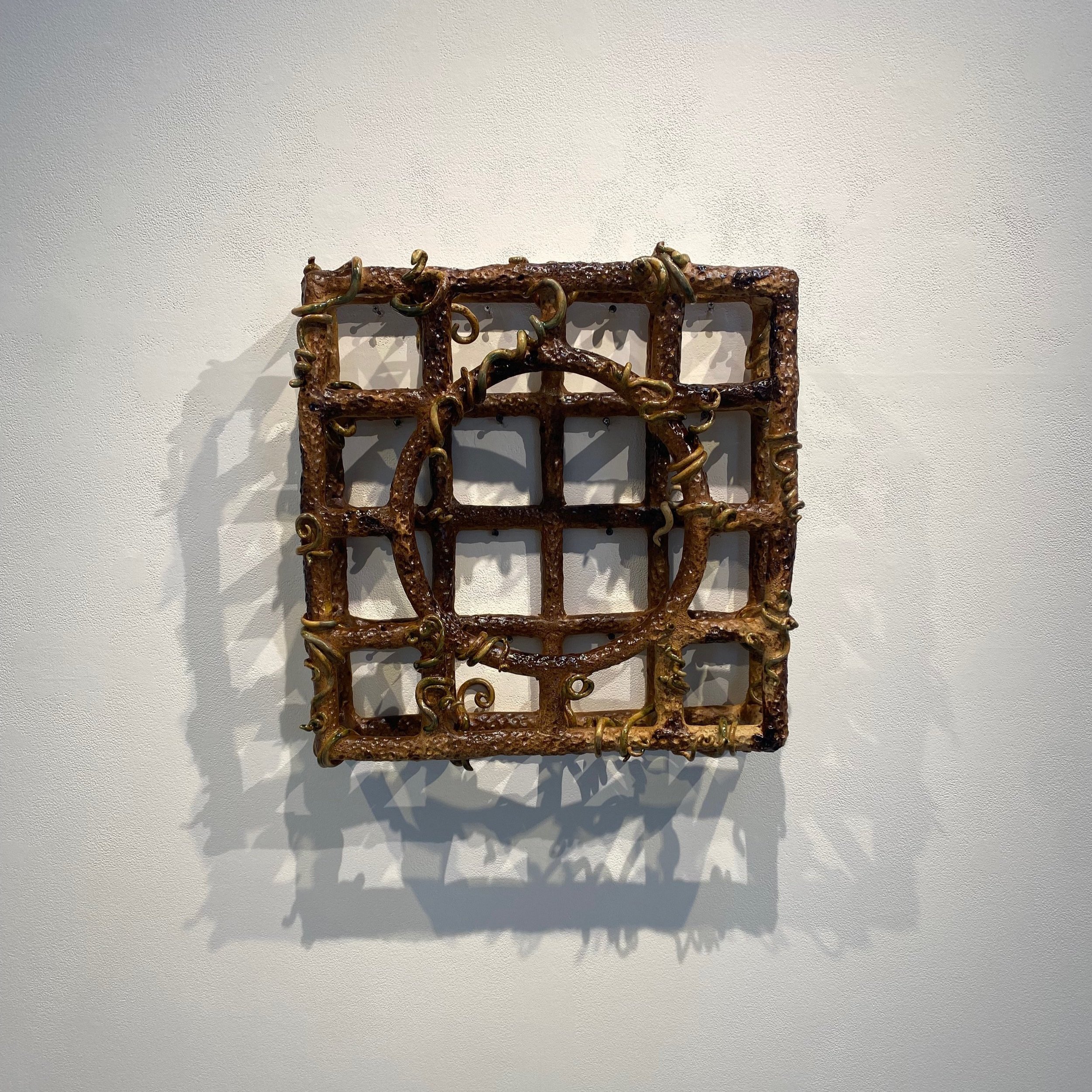
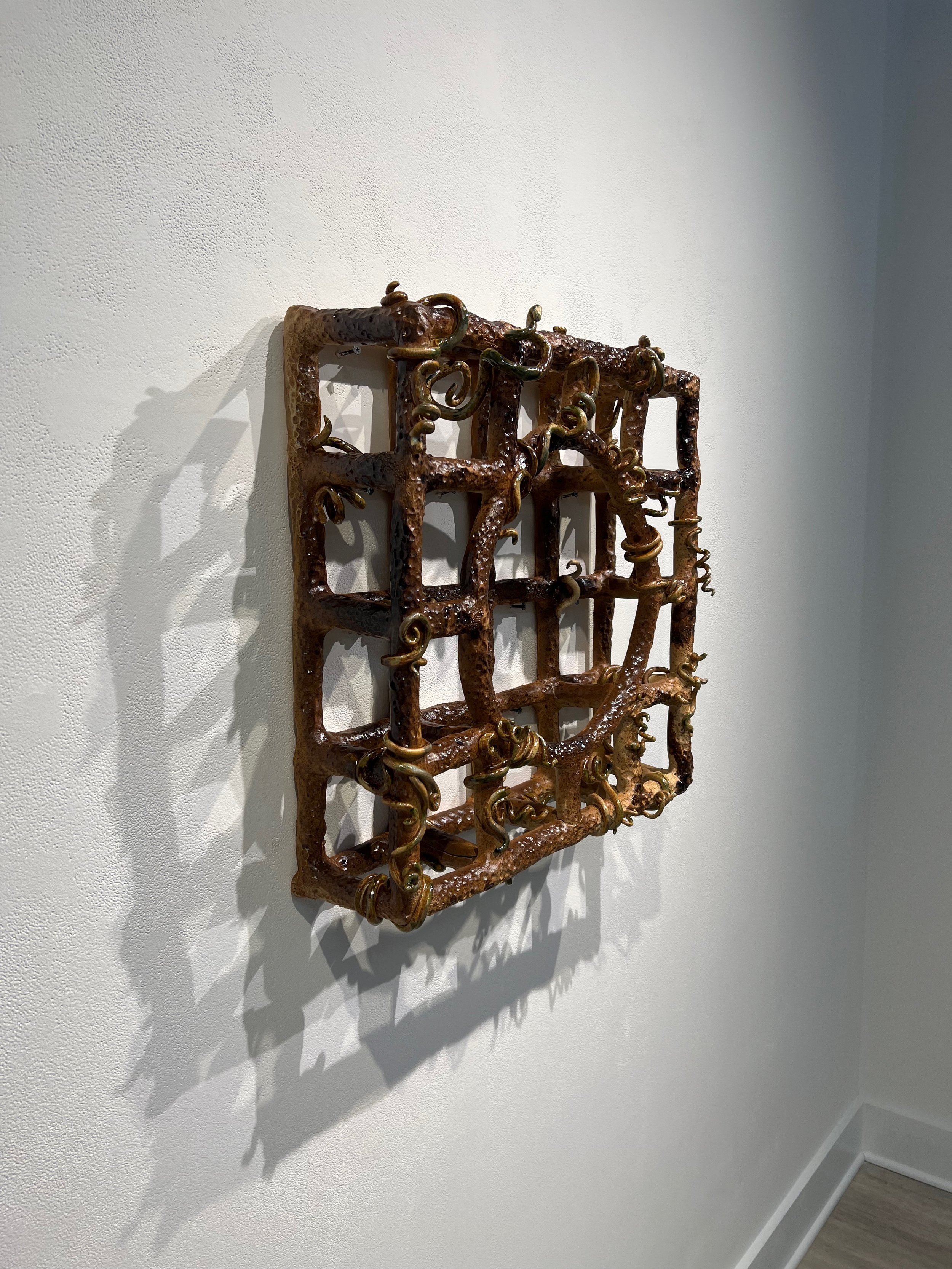
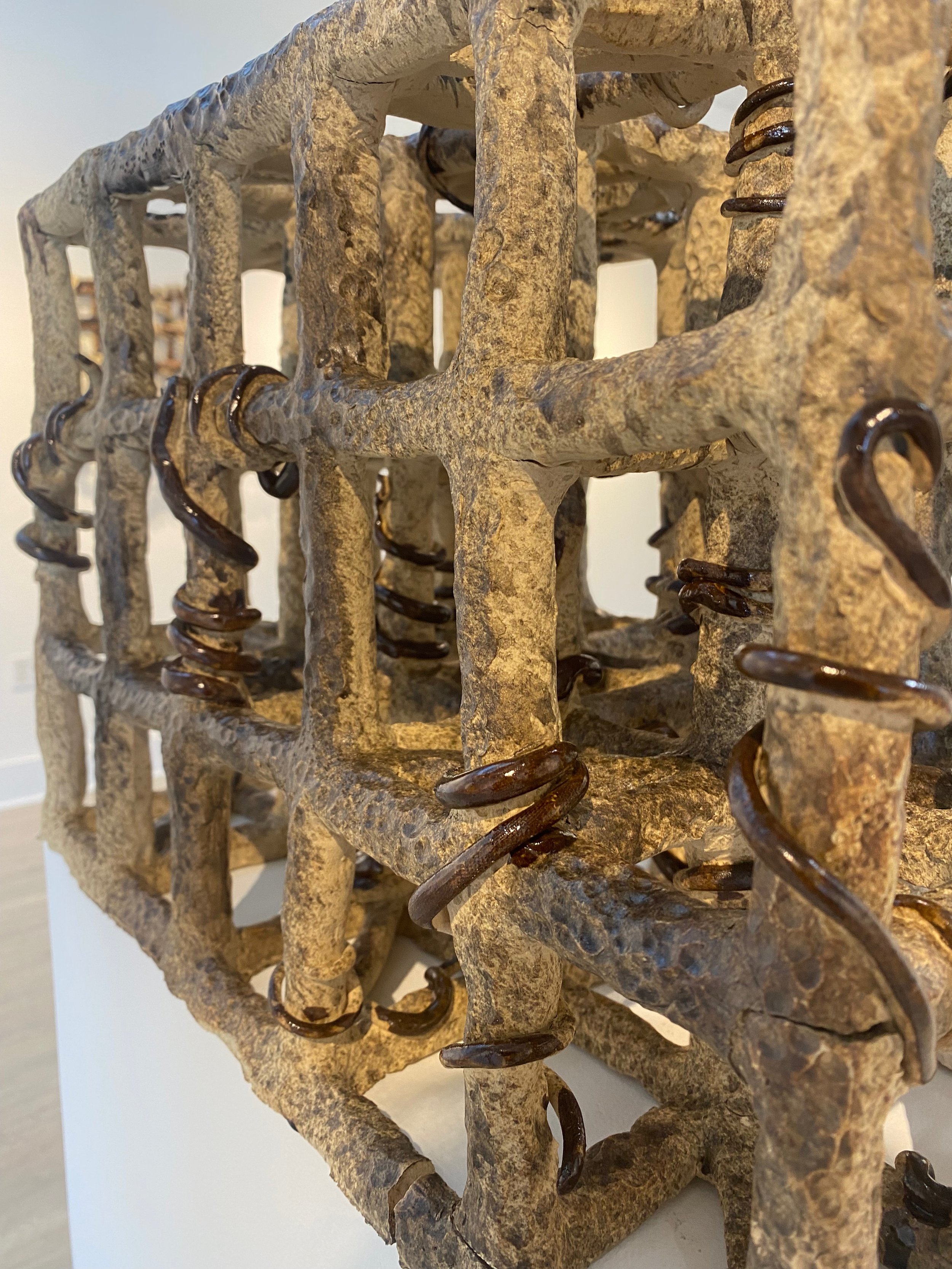
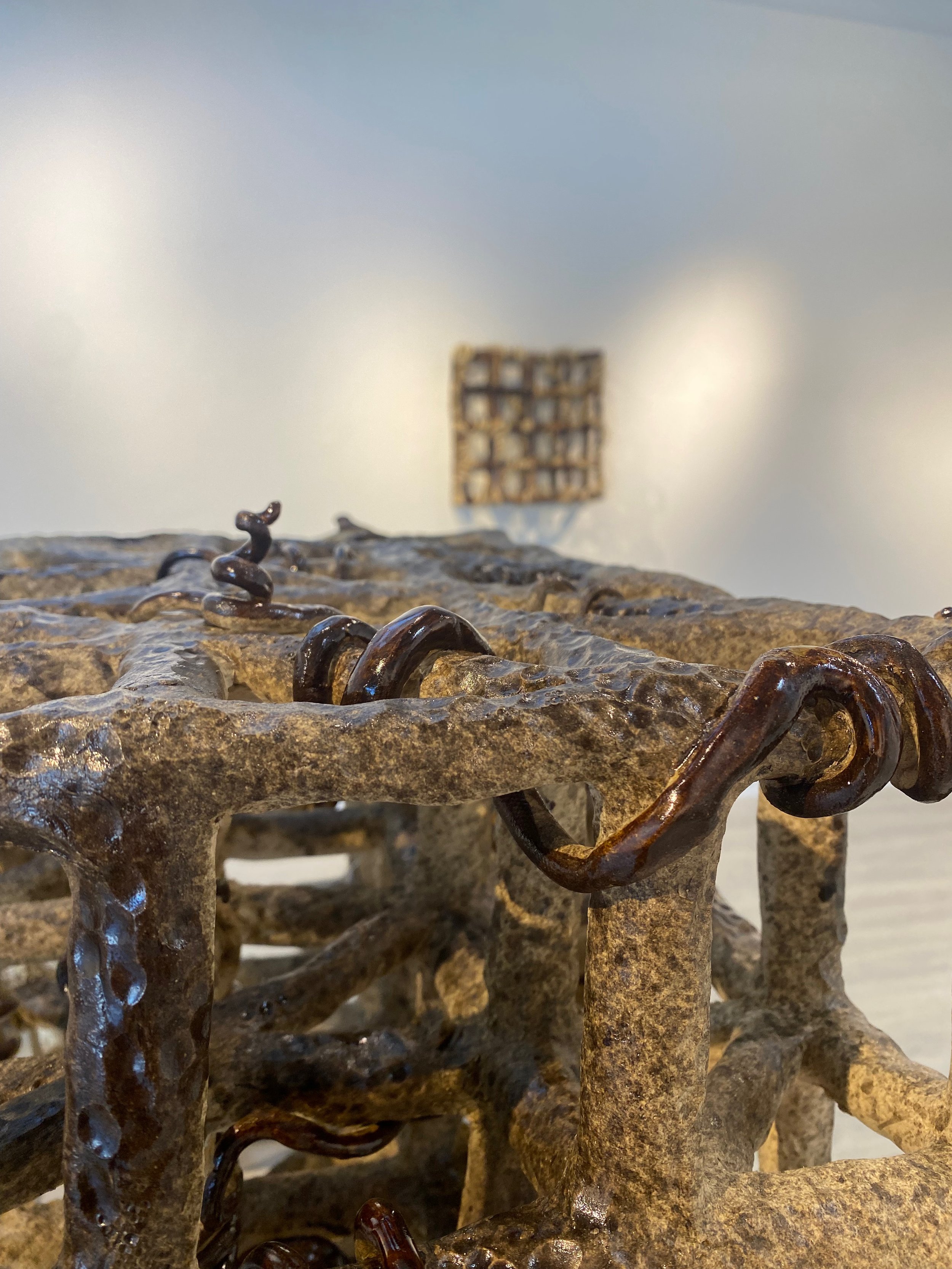
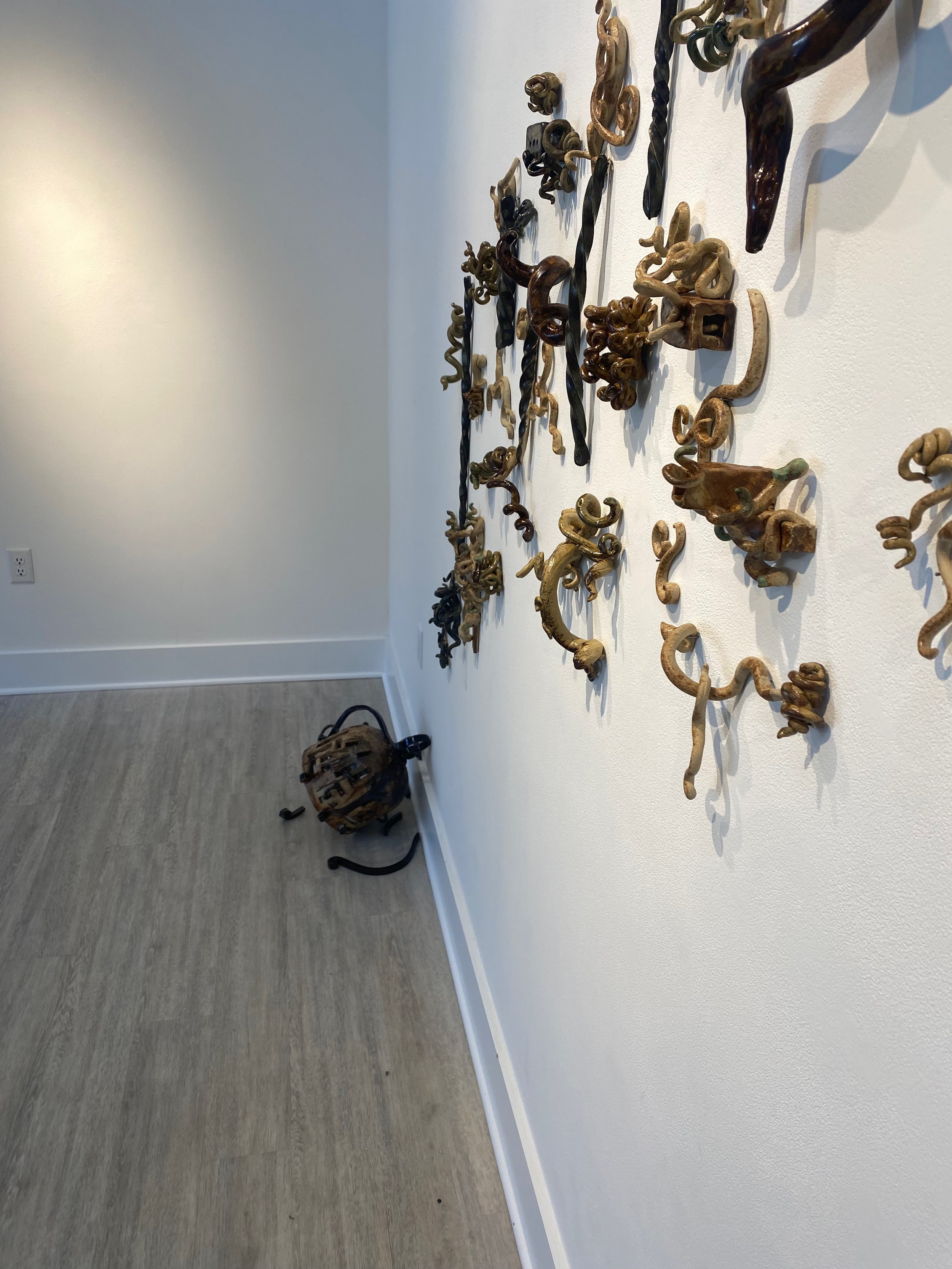
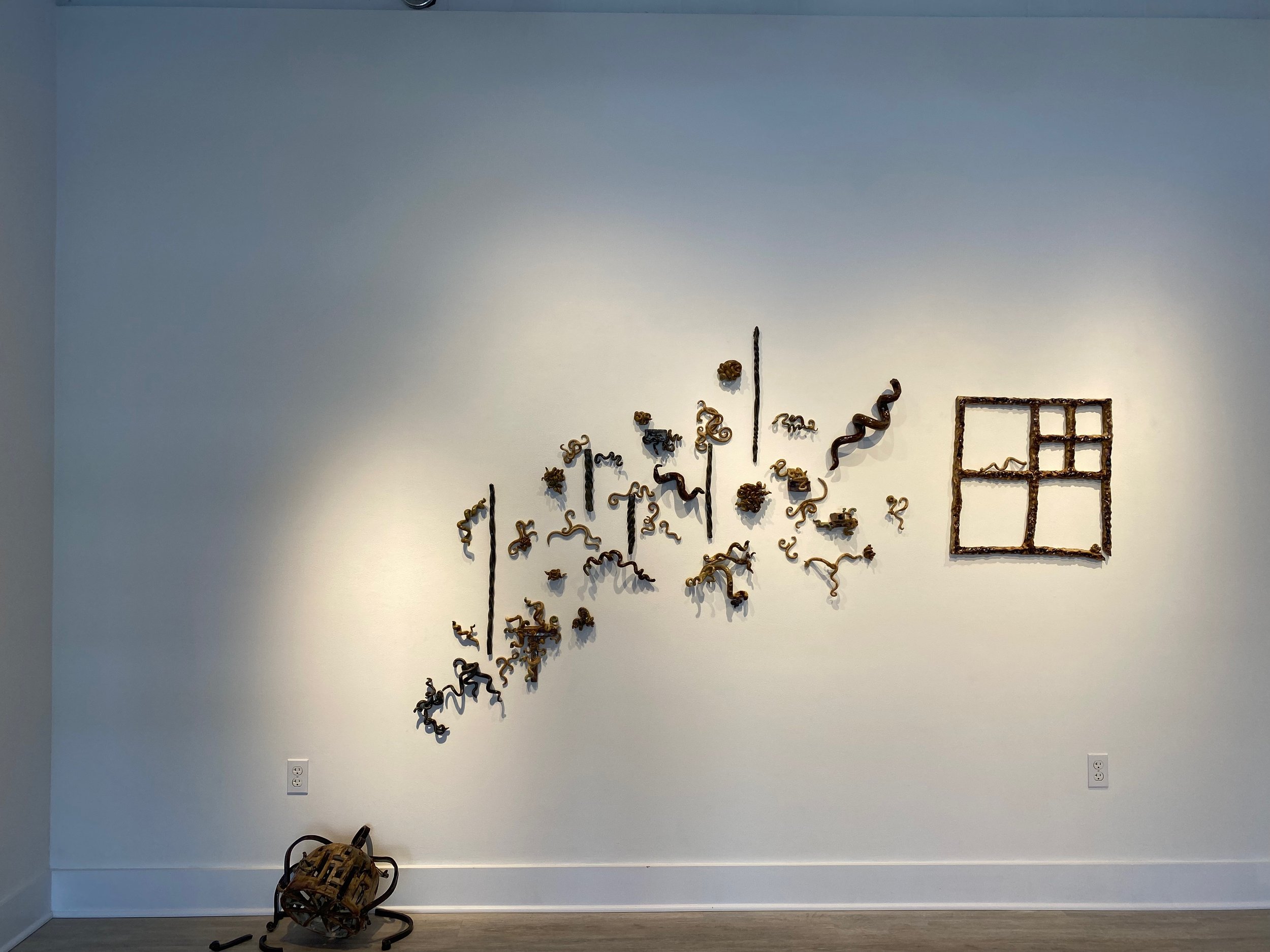
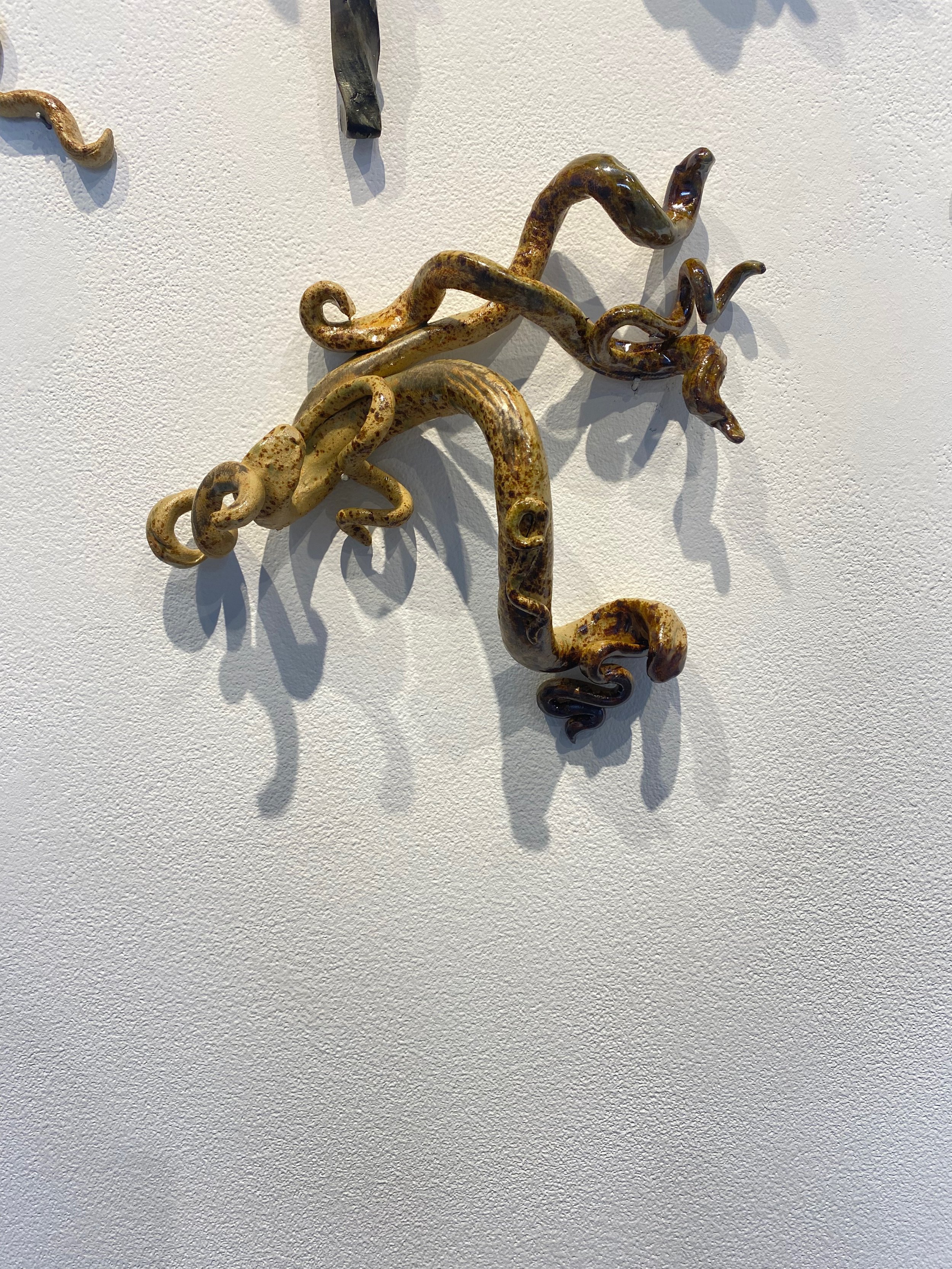
Works:
Grid Slice One, Ceramic Stoneware, 21in x 21in x 6in, 2023
Grid Slice Two, Ceramics Stoneware, 21in x 21in x 10in, 2023
Escape To A White Wall, Ceramics Stoneware, Installation wall: Sizes Vary, 2023
Built Grid, Ceramic Stoneware, 12in x 18in x 14in, 2023
I’ve spent a lot of time in gardens. Growing up, gardening was a chore I performed reluctantly. As a ceramicist, I now appreciate and enjoy working with the earth, but I had many years of watching over plants with only my imagination as a reprieve. For non-sentient life forms, plants can be very anthropomorphic. The tomato plants twist and shift and move their cages; the stakes for the peas get overrun with tendrils creeping all around them, evidence of a plant pulling itself up. These plants twist and curl and grab and grip against structures, interlocking in a way that feels chaotic and overrun by the end of the summer.
This body of work contains repeated forms inspired the relationship between the natural world and the built environment. There are references to materials, as with the iron rods in Escape To A White Wall, but the tendrils and the bars of the grids appear more abstracted. The tendrils wrap around everything, even themselves and each other. They exist within structures, and even when they seem to remove themselves from a cage, they remain in a rigid space up against the white pedestal and walls of a gallery. The weathered bars are reminiscent of agricultural or marine debris, worn down and built up by the natural world. These tendrils against the bars begin to gesture to a parasitic relationship, where the tendrils are possibly wearing down the structure, cracking it in places, but not with any specificity or intention, other than the desire to live and grow.
This dynamic between the built and the natural, the organic and inorganic, involves both beauty and destruction. The tendrils curl around the bars like an ornate decoration, and it’s not immediately clear how much of the damage done to the structures was the fault of these organic forms. When the tendrils curl in on themselves and they end up creating intricate knots. In the piece with the uncontained tendrils, they end up being flushed against the wall, pinned in place. I see the tendrils as a metaphor for humans. They take on the complex relationship to the structures in our lives, the damage we do to ourselves and each other, and the beauty we create.